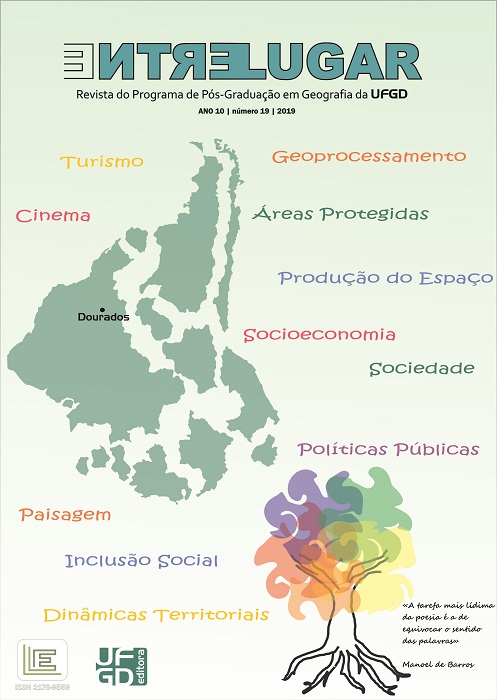Revenge is a dish best served cold”: the construction of cinematic landscape in Tarantino.
DOI:
https://doi.org/10.30612/el.v10i19.8916Keywords:
Geography and Cinema. Cinematic landscape. Cinematographic language. Subjectivities. Quentin Tarantino.Abstract
The objetive of this reflection is to discuss the construction of the cinematic landscape in Quentin Tarantino movies Kill Bill vol. 01 and Kill Bill vol. 02. Firstly it is discussied of the specifities of the cinematic landscapes in the geographical context. In a second moment, it is used as methodological resource particular elements of the cinematographic technic such as frames, planes, angles, camera movements, colors and lightning and it was reached the conclusion that the scenaries and landscape that compose the movies are created through differenciated practices whose give the movies landscapes that points to elements of belonging and non-belonging, coherence and estrangement, linearity and subversion, as well as, harmony and discomfort
Downloads
References
DURGNANT, R. Movie Eye. In: Architectural Review, n. 137, 1965.
ESCHER, Anton. The geography of cinema: a cinematic world. In: Erdkunde, v. 60, n. 04, 2006.
HIGSON, Andrew. The landscape of television. In: Landscape Research, n. 12, v. 03, 1987.
JAMESON, Fredric. The geopolitic aesthetics: cinema and space in the world system. New York: Bloomington, 1992.
KIRSCH, Scott. Spectacular violence, hyper geography, and the question of alienation in Pulp Fiction. In: CRESWELL, Tim; DIXON, Deborah. Engaging film: geographies of mobility and identity. Maryland: Rowan and Littlefield Publishers, 2002.
LUKINBEAL, Chris. Teaching historical geographies of American film production. In: Journal of Geography, v. 101, n. 06, 2002.
LUKINBEAL, Chris. The rise of regional film production centers in North America. In: GeoJournal, v. 59, n. 04, 2003.
LUKINBEAL, Chris. Cinematic landscapes. In: Journal of Cultural Geography, v. 23, n. 01, 2005.
MITCHELL, Don. Cultural Geography: a critical introduction. Oxford: Blackwell Publishers, 2000.
NIETSCHMANN, Bernard. Authentic, State, and Virtual Geography in film. In: Wide Angle, n. 15, v. 04, 1993.
Downloads
Published
How to Cite
Issue
Section
License
Autores que publicam nesta revista concordam com os seguintes termos:
- Autores mantém os direitos autorais e concedem à revista o direito de primeira publicação, com o trabalho simultaneamente licenciado sob a Creative Commons Atribuição-NãoComercial-CompartilhaIgual 3.0 Brasil que permitindo o compartilhamento do trabalho com reconhecimento da autoria do trabalho e publicação inicial nesta revista.
- Autores têm autorização para assumir contratos adicionais separadamente, para distribuição não-exclusiva da versão do trabalho publicada nesta revista (ex.: publicar em repositório institucional ou como capítulo de livro), com reconhecimento de autoria e publicação inicial nesta revista.
- Autores têm permissão e são estimulados a publicar e distribuir seu trabalho online (ex.: em repositórios institucionais ou na sua página pessoal) a qualquer ponto antes ou durante o processo editorial, já que isso pode gerar alterações produtivas, bem como aumentar o impacto e a citação do trabalho publicado (Veja O Efeito do Acesso Livre).




